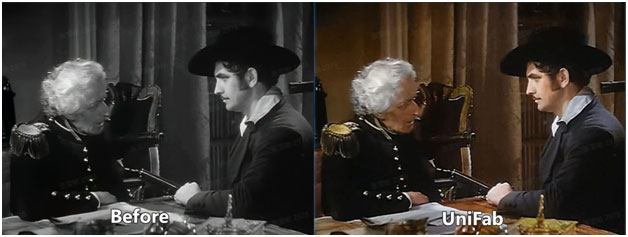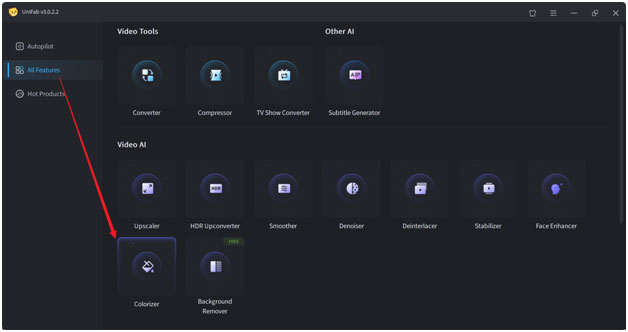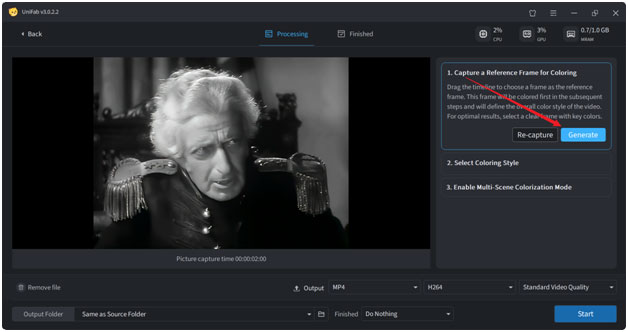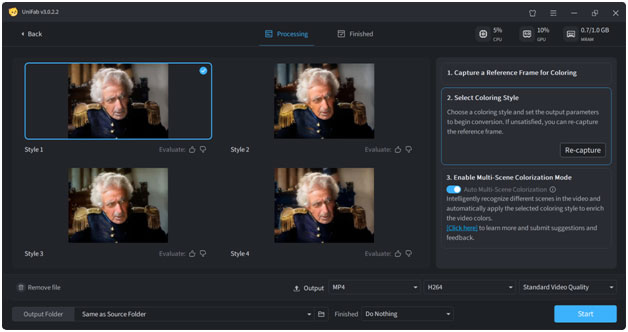What’s Lost in Black & White?
There’s something strangely haunting about watching old family videos in black and white. The faces on screen look familiar—yet not quite alive. Growing up, I’d pore over fuzzy 8mm birthday clips, always wondering: what color were Grandma’s curtains, or the party balloons my dad’s clutching? The magic, I’ve found, is that color isn’t just for looks; it’s a bridge that makes memories real.
Snatching the reds, blues, and yellows from oblivion isn’t only about aesthetics. Color brings out tiny moments—a blush, a picnic blanket, a playful wink—that monochrome wipes away. When people talk about “restoring old family videos color,” they’re not just thinking about pixels; they’re chasing the feeling of being there.
But, let’s be honest, manually coloring video is a chore. Before AI video colorizer tools hit the scene, I once tried painting frame by frame like a human Photoshop machine. It was hours of squinting, second-guessing, and—yup—plenty of frustration. The results? Let’s just say, everyone at the cookout looked like they’d been sunburned or caught in a cartoon.
These days, things have changed. The wave of video colorization with AI has turned an old-school pain into something almost magical. With new tools like UniFab AI Video Colorizer, bringing faces and places back to vibrant life is not just faster—it's accessible for regular folks with zero art skills. Watching my family’s world go from gray to vivid, all with a single click, is the kind of “tech wizardry” I didn’t know I needed until now.
 Photo by UniFab AI
Photo by UniFab AI
If you ever tried manual video colorization, you know the struggle. Matching skin tones, getting the background right, and replaying the scene for the hundredth time—it's borderline obsession. I still remember spending an entire weekend on a ten-second clip, only to realize that Uncle Frank’s shirt switched from blue to green halfway through. Sound familiar?
AI video colorizer tools flip that script. Instead of laboriously painting each frame, AI examines patterns and references real-world colors. When I tested both, the difference was night and day: Where my manual project felt stiff and, honestly, a little off, the AI version looked natural and lively. Suddenly, restoring old family videos color stopped being torture and became a discovery.
Here’s the cool part—modern video colorization with AI isn’t just about guessing. These systems “learn” from thousands of existing video samples: landscapes, fabrics, faces, and more. The best AI video colorizer (like UniFab AI) identifies context, not just edges, giving footage believable shades even when there’s no color info to go on.
Sometimes, AI gets creative—flowers in the background get the perfect pastel, and skin tones look surprisingly true. Now, not every guess is perfect (“Was Grandma’s dress ever THAT bright?”), but the results are real enough for nostalgia to kick in. In a way, that tiny bit of unpredictability makes every video feel like opening a time capsule.
I’ll be honest—my first time firing up UniFab AI Video Colorizer, I expected something clunky or overhyped. But curiosity (and a rainy Sunday afternoon) got the better of me. I dug out a home movie from the mid-60s: grainy, black and white, featuring my mom as a kid darting around a backyard. No pressure, right?
Uploading was a breeze. Within a minute, UniFab’s engine analyzed the footage and started weaving in color. I couldn’t help but smile as I watched in near-real time: the leaves regained their greenness, and my mother’s dress—pale blue, as she always described—emerged from the grayscale like magic. Was every detail 100% historically accurate? Maybe not, but what mattered was how alive the scene suddenly felt.
What really surprised me was the emotional punch. Seeing color wash over those familiar faces made me feel like I was visiting a memory, not just observing it from afar. Any technical quirkiness—an odd shade here or there—only added to the charm.
Honestly, I used to worry that “AI will never get it right.” But sometimes, close enough is the greatest gift you can give to a memory.
Step 1: Upload Your Footage
Ready to try it yourself? Here’s how I used UniFab AI Video Colorizer to turn my monochrome memories into vibrant scenes. First things first—track down the black and white video you want to transform. Any old family clip will do (I dug up a digitized VHS, but phone files and MPG/AVI work too). Download and launch UniFab, choose “Colorizer” module, and hit the upload button. The interface is pleasantly simple, even if you’re not techy.
 Photo by UniFab AI
Photo by UniFab AI
Step 2: Set Preferences & Preview
Once your footage is uploaded, you’ll see a few settings for style. You can preview color style before committing, which is pretty handy if you want to triple-check how that old living room looks with a fresh coat of color. Here's a quick checklist to streamline your first run:
 Photo by UniFab AI
Photo by UniFab AI
 Photo by UniFab AI
Photo by UniFab AI
Step 3: Process and Download
Happy with your preview? Click “Start”—the software gets to work fast. You’ll see a progress bar; I sipped my coffee and, in less than ten minutes, actually gasped when playback started. The colors felt natural, faces warm, backgrounds lively. When it’s done, just download and share. No confusing steps, no technical jargon—just instant nostalgia, refreshed.
Bringing faded memories back to life with AI video colorization is a lot less intimidating than I ever expected. Tools like UniFab AI Video Colorizer don’t just add color to black and white video—they make old moments feel close enough to touch. Whether you’re restoring a family wedding, childhood birthdays, or just curious about “what if,” the process is quick, satisfying, and surprisingly fun.
Honestly, the biggest lesson? You don’t need to be a technical genius or an artist. Sometimes, trusting a splash of AI-powered color is all it takes to make the past truly present.
Discover our other works at the following sites:
© 2025 Danetsoft. Powered by HTMLy